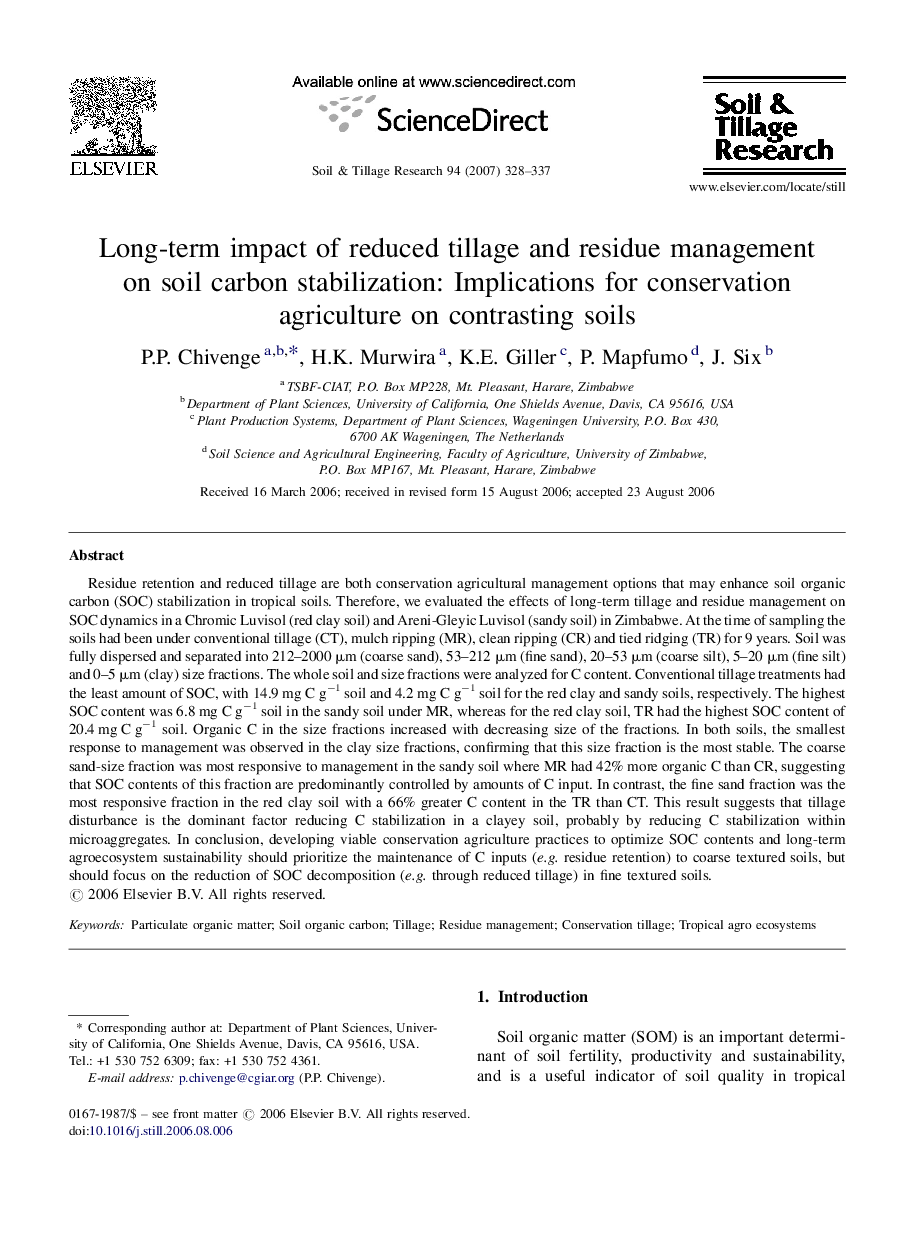| کد مقاله | کد نشریه | سال انتشار | مقاله انگلیسی | نسخه تمام متن |
|---|---|---|---|---|
| 306650 | 513108 | 2007 | 10 صفحه PDF | دانلود رایگان |

Residue retention and reduced tillage are both conservation agricultural management options that may enhance soil organic carbon (SOC) stabilization in tropical soils. Therefore, we evaluated the effects of long-term tillage and residue management on SOC dynamics in a Chromic Luvisol (red clay soil) and Areni-Gleyic Luvisol (sandy soil) in Zimbabwe. At the time of sampling the soils had been under conventional tillage (CT), mulch ripping (MR), clean ripping (CR) and tied ridging (TR) for 9 years. Soil was fully dispersed and separated into 212–2000 μm (coarse sand), 53–212 μm (fine sand), 20–53 μm (coarse silt), 5–20 μm (fine silt) and 0–5 μm (clay) size fractions. The whole soil and size fractions were analyzed for C content. Conventional tillage treatments had the least amount of SOC, with 14.9 mg C g−1 soil and 4.2 mg C g−1 soil for the red clay and sandy soils, respectively. The highest SOC content was 6.8 mg C g−1 soil in the sandy soil under MR, whereas for the red clay soil, TR had the highest SOC content of 20.4 mg C g−1 soil. Organic C in the size fractions increased with decreasing size of the fractions. In both soils, the smallest response to management was observed in the clay size fractions, confirming that this size fraction is the most stable. The coarse sand-size fraction was most responsive to management in the sandy soil where MR had 42% more organic C than CR, suggesting that SOC contents of this fraction are predominantly controlled by amounts of C input. In contrast, the fine sand fraction was the most responsive fraction in the red clay soil with a 66% greater C content in the TR than CT. This result suggests that tillage disturbance is the dominant factor reducing C stabilization in a clayey soil, probably by reducing C stabilization within microaggregates. In conclusion, developing viable conservation agriculture practices to optimize SOC contents and long-term agroecosystem sustainability should prioritize the maintenance of C inputs (e.g. residue retention) to coarse textured soils, but should focus on the reduction of SOC decomposition (e.g. through reduced tillage) in fine textured soils.
Journal: Soil and Tillage Research - Volume 94, Issue 2, June 2007, Pages 328–337